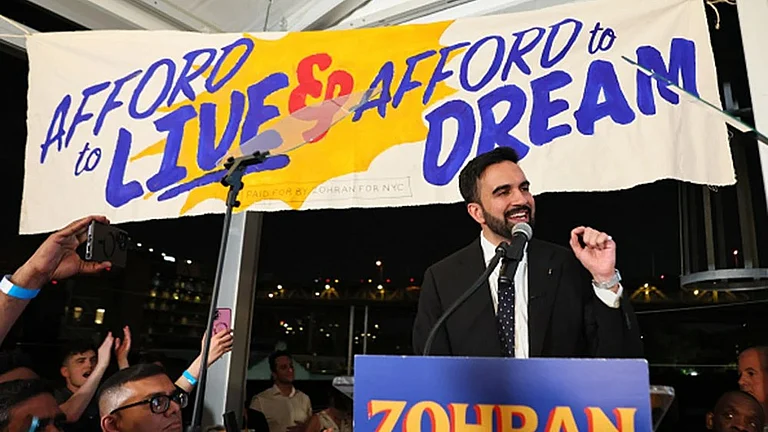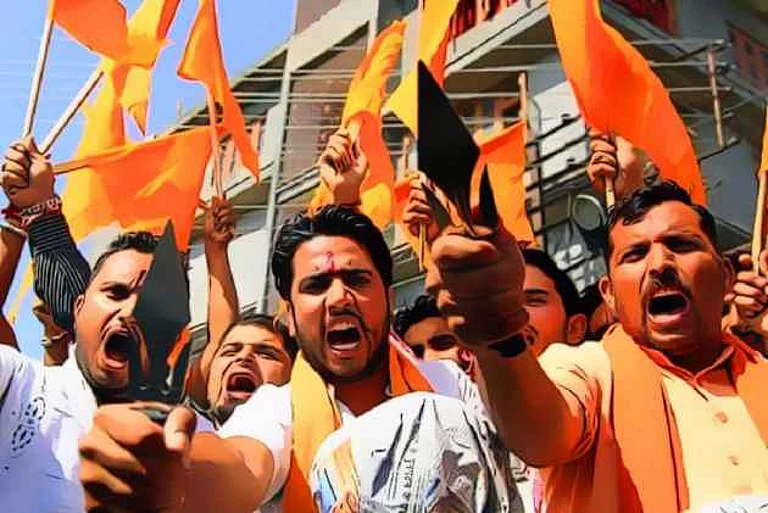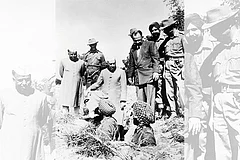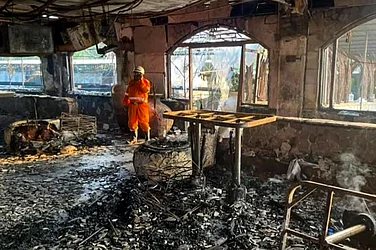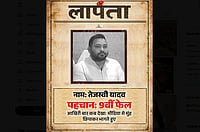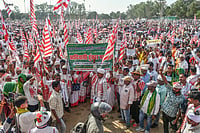The bulldozer, previously a utilitarian tool, has now become a symbol of political power, and politicians are using it as a strategic political instrument. One such example is the Khargone bulldozer demolitions, where former chief minister of Madhya Pradesh (MP), Shivraj Singh Chouhan, used the bulldozer to make a powerful political statement in 2022—using it against those seen to be violating the new socio-political order. Now more states have joined the bulldozer bandwagon.
For Wasim Ahmed, April 10, 2022 marks the day of his ruination. He recalls the violence that broke out during the Ram Navami procession in Khargone, MP: “It will soon be two years since that calamitous day. On April 9, a Ram Navami procession was taken out from the Chandni Chowk area of Khargone. Stones were pelted and violence broke out. After that, a curfew was imposed in the entire city. We couldn’t leave our homes. The next morning, people told me that my shop had been flattened with a bulldozer.”
After the stone pelting incident, the then home minister of MP, Narottam Mishra, had said that the houses and shops of those involved would be demolished and reduced to a heap of stones. Ahmed’s small grocery shop was among the five shops that were razed in a section of the Chandni Chowk area.
Ahmed, 37, was accused of throwing stones at the procession. However, he has a severe handicap. He says: “After an accident in 2005, both my hands were amputated. Since then, I can’t even drink tea by myself. So how can I lift and throw a stone?”
MP-based activist, Arun Pande (name changed), says, “The demolition of houses and shops here is influenced by the bulldozer model in Uttar Pradesh (UP). What is clearly visible in such actions is that no legal process was followed before the demolitions. No notice was given to anyone.”
According to an investigation report by the People’s Union for Civil Liberties (PUCL), only the houses and shops of Muslims were targeted. Their properties were destroyed without issuing any notice or giving them time.
In another incident, related to the Mahakal Yatra in Ujjain in August last year, three Muslim boys were accused of spitting on the yatris. An FIR was registered against them and they were arrested. Later, their houses were demolished with bulldozers. However, till today, the police have not presented any evidence of the alleged spitting. Subsequently, two boys were granted bail a month later, and the third boy was released in January this year by the MP High Court.
Many organisations and social activists allege that a particular community is being targeted through such actions. Following the violence that broke out in Nuh, Haryana, in July-August last year, the Punjab and Haryana High Court, too, made scathing remarks about the government’s “bulldozer action”. The incident saw large-scale bulldozing of Muslim shops and houses in the district. Taking suo moto cognisance of the matter, the court had asked, “On this pretext, do you [the district administration and the state government] want to target and eliminate a community?” According to a media report, 1,208 buildings and other constructions were razed to the ground in 11 towns in Nuh district, Haryana, within a span of five days.
After the demolition of houses and shops across the country, cases of graves and tombs being razed with bulldozers are now coming to light.
There are many such incidents. In July 2020, after a violent clash between the police and gangsters in Bikroo, the UP government had ordered the houses of gangsters to be demolished with bulldozers.
In June, 2022, a procession—which was taken out by the Muslim community in Atala, UP, to protest against Nupur Sharma’s statement on Prophet Muhammad—took a violent turn. After violence, many houses were demolished with bulldozers. Of these, the case of the 57-year-old social activist Mohammad Javed made news. The police allege that Javed was the mastermind behind the incident and arrested him on June 11. The next day, his house was demolished with a bulldozer.
Javed’s 22-year-old daughter, Sumaiya Fatima, tells Outlook: “My father is innocent. A day before June 10, abbu had appealed to the people through a video to offer their Friday prayers [on June 10] in a peaceful manner and go home. But the police called him the mastermind and put him in jail.” According to Fatima, the administration has not been able to tell the court why their house was declared illegal.
It was also said that the map of Javed’s house was not sanctioned. Fatima asks why her family was not given time to respond before the house was destroyed and why the legal notice was issued only a day before the demolition. Javed has been in jail for almost two years now, with 10 cases registered against him, which includes charges under the National Security Act, 1980.
S R Darapuri, a retired IPS officer and vice president of UP’s PUCL, says that the demolitions in UP is one-sided and illegal. He says: “Of all the houses demolished in the name of encroachment in UP, 95 per cent belonged to Muslims. Whenever a case is registered against Muslims, the government not only arrests them, but also bulldozes their houses. Sometimes the reason given is that the plan of the house has not been approved, and at other times, they allege encroachment.”
There is a long legal process to be followed before a house or shop is demolished, says Darapuri. If someone has built a house in the city without an approved map or by encroachment, then the development authority and the village Sub-Divisional Magistrate serves them a notice. After the accused is given an opportunity to present his or her case, it is evaluated for its merits. Then there is a personal hearing. If the encroachment is established at this stage, the structure can be termed as an illegal construction. Then a second notice is sent before the demolition.
In March, 2023, about 350 Muslim houses in three areas of Dwarka in Gujarat were razed to the ground by the district administration, citing encroachment. This includes the house of Jakub Pateliya, who has filed a petition in the Gujarat High Court. He says: “We had been living here for 40 years. Suddenly, one day, the government sends a notice asking us to vacate the house within five days. There are a hundred houses of non-Muslims in this area, which have not been touched. We have demanded rehabilitation, but no one listens.”
After the demolition of houses and shops across the country, cases of graves and tombs being razed with bulldozers are now coming to light. A person no less than the Home Minister of Gujarat declared that his government had got 108 illegal mazars demolished and that more such tombs would be demolished. Recently, in Haldwani, Uttarakhand, a mosque and a shrine were demolished on the grounds that they were illegal constructions. In Delhi, a 500-year-old mazar was demolished recently.
Commenting on the “bulldozer action” phenomenon, Nadeem Khan, national secretary of the Association for Protection of Civil Rights, says that it embodies a theory of ‘collective punishment’ borrowed from Israel. It is worrisome that the courts have not yet made any concrete observations on the matter, he adds.
MORE FROM THIS ISSUE
Khan believes that it is relatively easy for the government to demolish mazars because people do not have the same sentimental attachment to graves and tombs as they have for mosques.
(Translated by Kaushika Draavid)
(This appeared in the print as 'Demolition Row')








